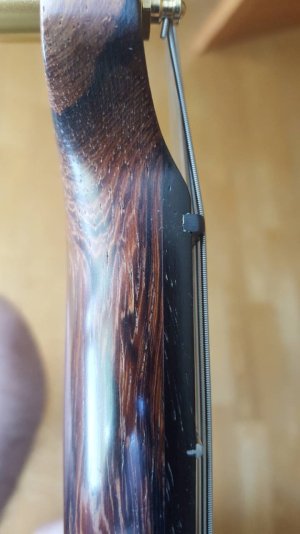I have a warmoth purchased back in the early 90s and it was made from "Palisander". I asked the sales dude what that meant and he said it was from Madagascar.
If anybody from back then is still around who knows what the deal was, maybe you could explain what dalbergia species was being touted as palisander, because I just can't find much in the way of a dalbergia species to nail "palisander" to. Was it dalbergia baroni? I know it wasn't dalbergia nigra because that was being sold as an upgrade.
With all of this CITES stuff going on and manufacturers shifting from rosewood to alternatives just for mere fingerboards (mine is all palisander rosewood with a brazilian board), I'm thinking that maybe I might have something. I just wish I knew exactly what I have.
If anybody from back then is still around who knows what the deal was, maybe you could explain what dalbergia species was being touted as palisander, because I just can't find much in the way of a dalbergia species to nail "palisander" to. Was it dalbergia baroni? I know it wasn't dalbergia nigra because that was being sold as an upgrade.
With all of this CITES stuff going on and manufacturers shifting from rosewood to alternatives just for mere fingerboards (mine is all palisander rosewood with a brazilian board), I'm thinking that maybe I might have something. I just wish I knew exactly what I have.



